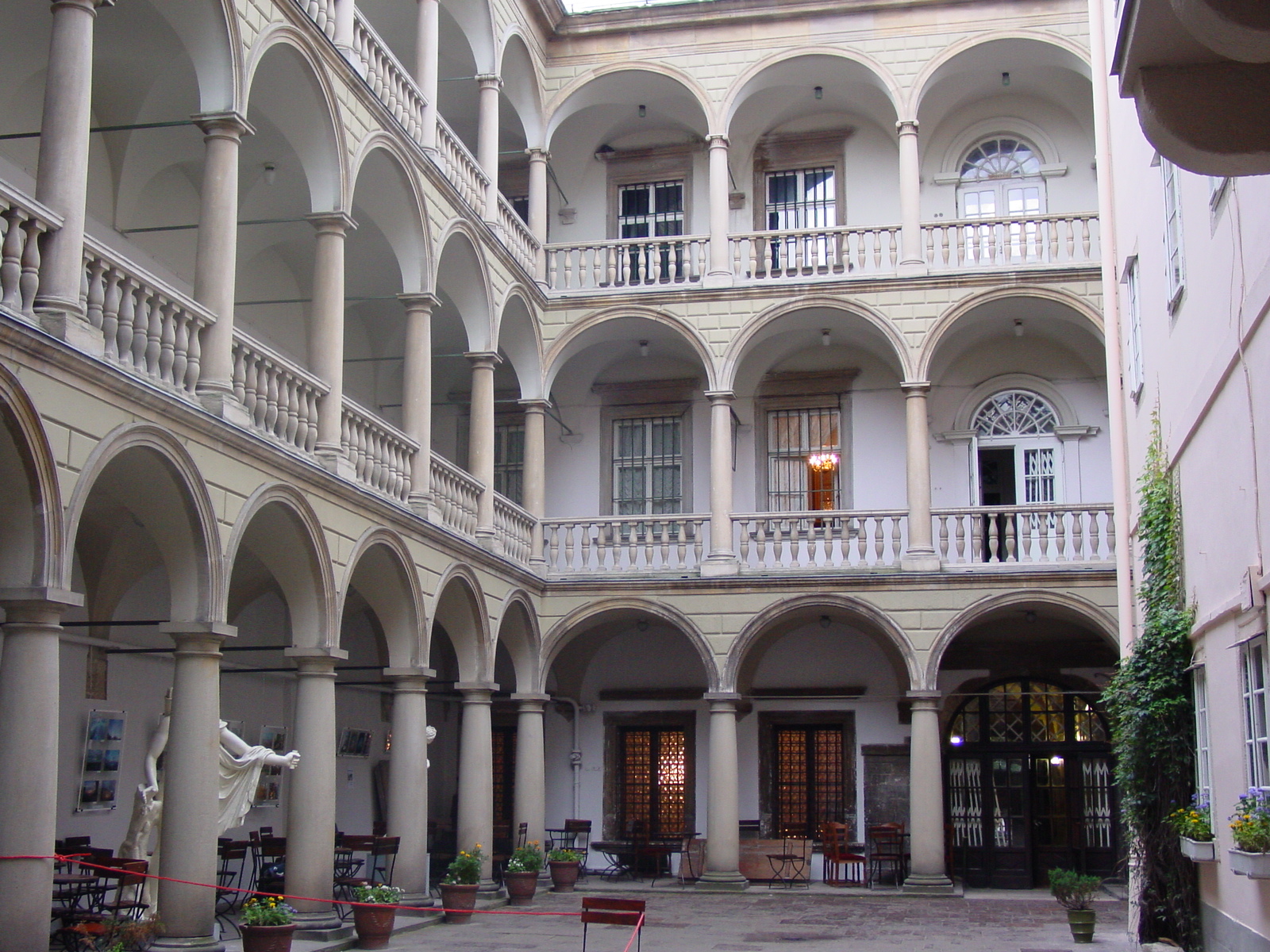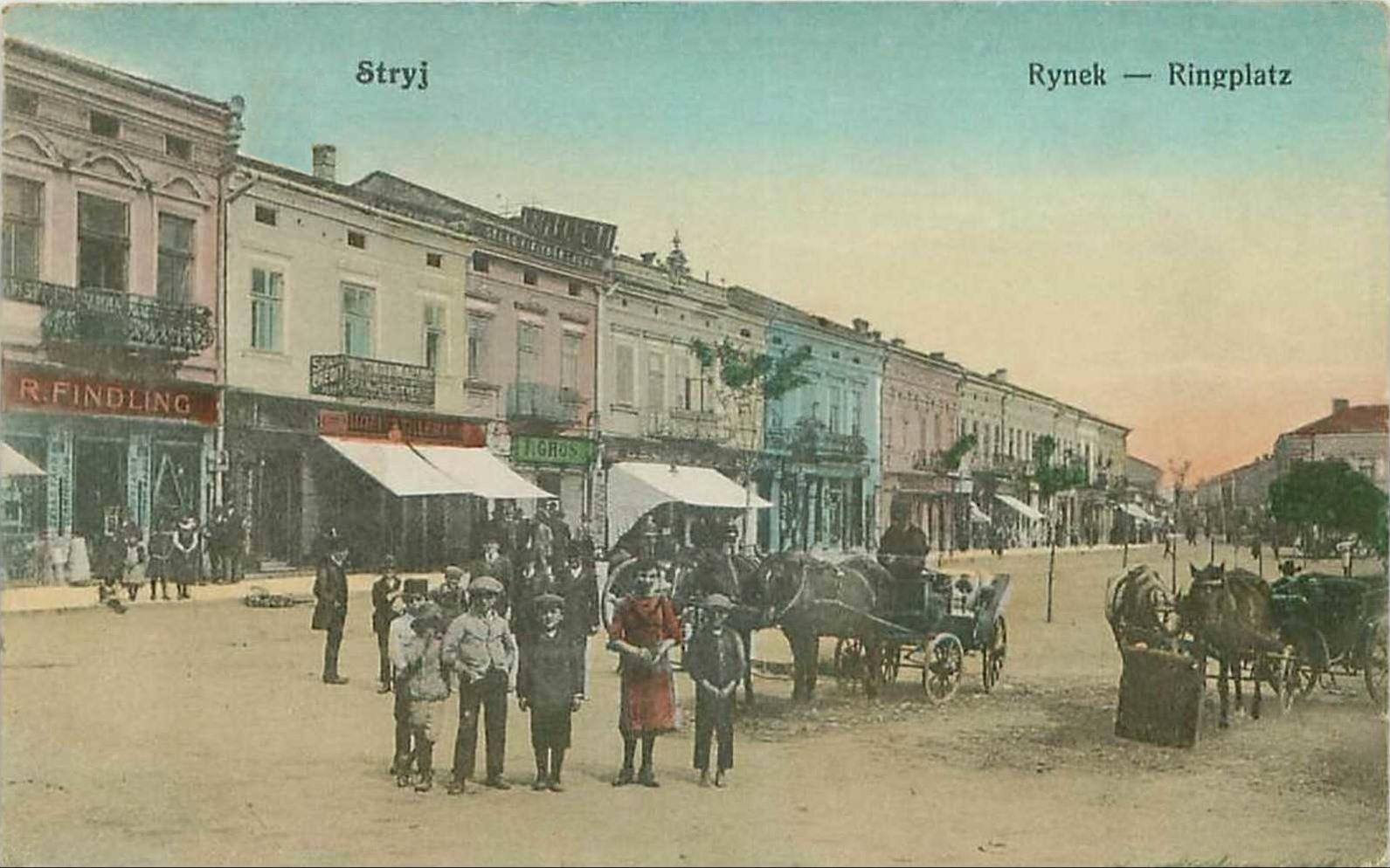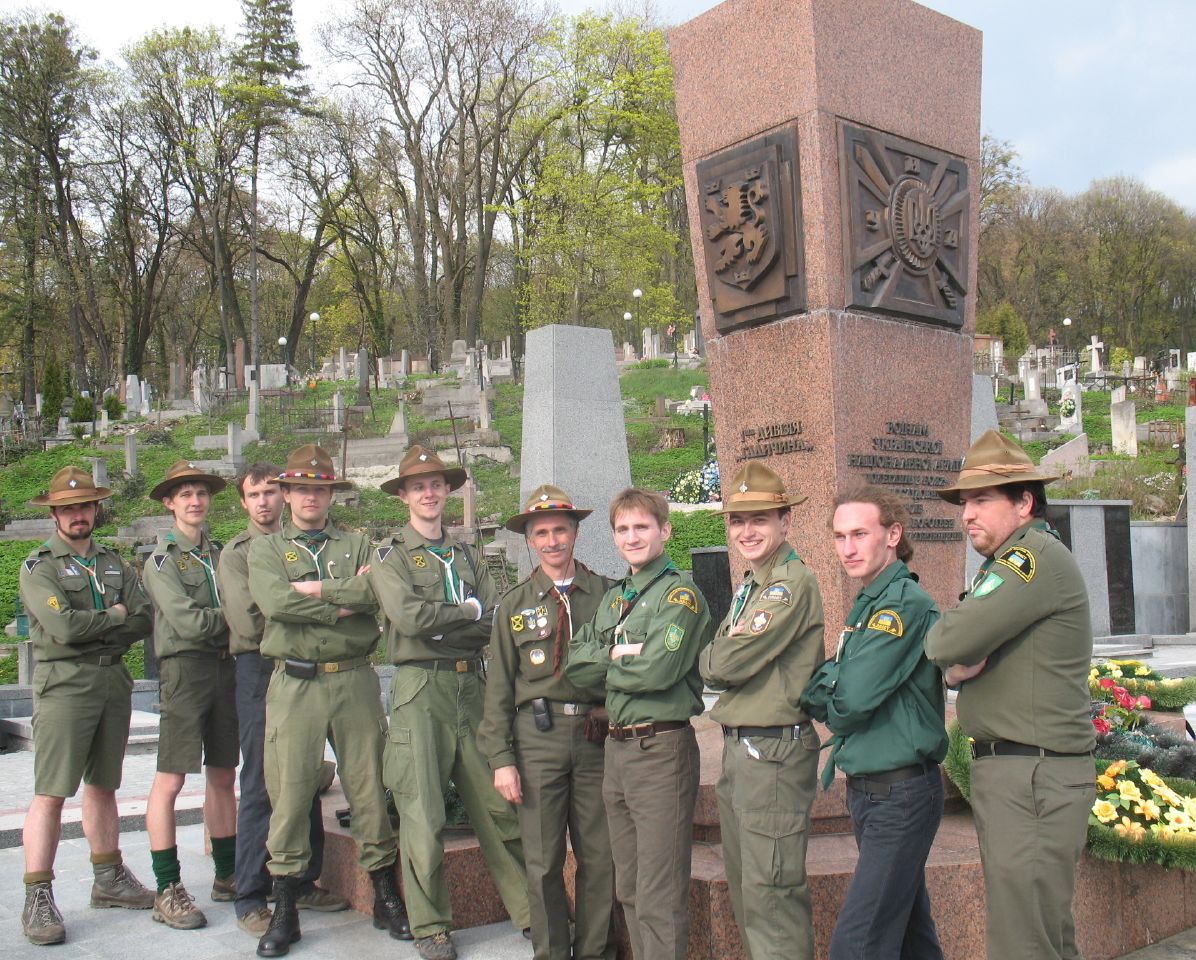|
Julian Oktawian Zachariewicz-Lwigród
Julian Oktawian Zachariewicz-Lwigród (17 July 1837 – 27 December 1898), commonly referred to as Julian Zachariewicz, was a Polish architect and renovator of Armenian descent. Zachariewicz was a graduate of the Royal Polytechnic Institute in Vienna, and a professor and rector (1881–1882) of the Lemberg Polytechnic. Father of architect Alfred Zachariewicz and intellectual . Life He was born in Lemberg, Austrian Empire ( Polish: Lwów, now Lviv, Ukraine) to an Armenian family. He graduated from the Vienna University of Technology. Until 1870, he held numerous positions as a qualified engineer in the Austrian State Railways. In 1871, he was offered the post of director of the newly-established Faculty of Civil Engineering at the Lviv Technical Academy (now Lviv Polytechnic). As a consequence, he returned to Lviv and worked as professor at the academy and was appointed dean of the Faculty of Civil Engineering. Between 1877–1878 and 1881–1882 he served as rector of the ... [...More Info...] [...Related Items...] OR: [Wikipedia] [Google] [Baidu] |
Lviv
Lviv ( or ; ; ; see #Names and symbols, below for other names) is the largest city in western Ukraine, as well as the List of cities in Ukraine, fifth-largest city in Ukraine, with a population of It serves as the administrative centre of Lviv Oblast and Lviv Raion, and is one of the main Ukrainian culture, cultural centres of Ukraine. Lviv also hosts the administration of Lviv urban hromada. It was named after Leo I of Galicia, the eldest son of Daniel of Galicia, Daniel, King of Ruthenia. Lviv (then Lwów) emerged as the centre of the historical regions of Red Ruthenia and Galicia (Eastern Europe), Galicia in the 14th century, superseding Halych, Chełm, Belz, and Przemyśl. It was the capital of the Kingdom of Galicia–Volhynia from 1272 to 1349, when it went to King Casimir III the Great of Kingdom of Poland, Poland in a Galicia–Volhynia Wars, war of succession. In 1356, Casimir the Great granted it town rights. From 1434, it was the regional capital of the Ruthenian ... [...More Info...] [...Related Items...] OR: [Wikipedia] [Google] [Baidu] |
History Of Lviv
Lviv ( Ukrainian: , ''L’viv''; ; or ''Leopoldstadt'' (''archaic''); ; , see also other names) is an administrative center in western Ukraine with more than a millennium of history as a settlement, and over seven centuries as a city. Prior to the creation of the modern state of Ukraine, Lviv had been part of numerous states and empires, including, under the name ''Lwów'', Poland and later the Polish–Lithuanian Commonwealth; under the name ''Lemberg'', the Austrian and later Austro-Hungarian Empires; the short-lived West Ukrainian People's Republic after World War I; Poland again; and the Soviet Union. In addition, both the Swedes and the Ottoman Turks made unsuccessful attempts to conquer the city. Early history Recent archaeological excavations show that the area of Lviv has been populated since at least the 5th century, with the gord at -Voznesensk Street in Lychakivskyi District attributed to White Croats. In 981, the Cherven Cities were conquered by Volodymyr th ... [...More Info...] [...Related Items...] OR: [Wikipedia] [Google] [Baidu] |
Coat Of Arms
A coat of arms is a heraldry, heraldic communication design, visual design on an escutcheon (heraldry), escutcheon (i.e., shield), surcoat, or tabard (the last two being outer garments), originating in Europe. The coat of arms on an escutcheon forms the central element of the full achievement (heraldry), heraldic achievement, which in its whole consists of a shield, supporters, a crest (heraldry), crest, and a motto. A coat of arms is traditionally unique to the armiger (e.g. an individual person, family, state, organization, school or corporation). The term "coat of arms" itself, describing in modern times just the heraldic design, originates from the description of the entire medieval chainmail "surcoat" garment used in combat or preparation for the latter. Roll of arms, Rolls of arms are collections of many coats of arms, and since the early Modern Age centuries, they have been a source of information for public showing and tracing the membership of a nobility, noble family, a ... [...More Info...] [...Related Items...] OR: [Wikipedia] [Google] [Baidu] |
Stryi
Stryi (, ; ) is a city in Lviv Oblast, western Ukraine. It is located in the left bank of the Stryi (river), Stryi River, approximately south of Lviv in the foothills of the Carpathian Mountains. It serves as the administrative center of Stryi Raion within the oblast. Stryi also hosts the administration of Stryi urban hromada, one of the hromadas of Ukraine. Its population is approximately Name The city takes its name from that of the river Stryi (river), Stryi, a tributary of the Dniester. The river's name is very old and means "stream". Its etymology stems from the Indo-European root *sreu. The area was inhabited by the White Croats and it has been established that name Horvat (Croat) is likewise of Iranian (Sarmatian) origin. In different times the name was written differently, and in various old documents we can find such names: Stryg, Stry, Stryj, Stryjn, Stryjia, Strig, Strigenses, Stryi, Strey, Striig, Strya, Sthryensis, Sthrya, Stryei, and Stri. The inhabitants take ... [...More Info...] [...Related Items...] OR: [Wikipedia] [Google] [Baidu] |
Lychakivskiy Cemetery
Lychakiv Cemetery (; ), officially State History and Culture Museum-Reserve "Lychakiv Cemetery" (), is a historic cemetery in Lviv, Ukraine. History Since its creation in 1787 as Łyczakowski Cemetery, it has been the main necropolis of the city's ( at the time named Lemberg) intelligentsia, middle and upper classes. Initially the cemetery was located on several hills in the borough of Lychakiv, following the imperial Austro-Hungarian (the city was located in Austria-Hungary at the time) edict ordering that all cemeteries be moved outside of the city limits. The original project was prepared by , the head of the Lviv University botanical garden. In mid-1850s the cemetery was expanded significantly by Tytus Tchórzewski, who created the present network of alleys and round-abouts. It then became the main city cemetery, and soon most other cemeteries were closed. The two largest that remained were the Yanivskiy Cemetery (), with many working class graves and the adjacent New Jewi ... [...More Info...] [...Related Items...] OR: [Wikipedia] [Google] [Baidu] |
General National Exhibition In Lviv
The General National Exhibition in Lviv (Polish language, Polish: ''Powszechna Wystawa Krajowa we Lwowie'') was a national exposition held in 1894 in the city of Lviv (Polish: ''Lwów'') on the centenary of the Kościuszko Uprising. Its aim was to showcase the economic and cultural achievements of Galicia (Eastern Europe), Galicia and to present the works of art of the Kingdom of Galicia and Lodomeria as well as all other Polish lands under foreign rule. History Preparations before the grand opening of the exhibition took around two years. Architects Julian Zachariewicz and Franciszek Skowron supervised the construction of the pavilions for the fair. They were assisted by Zygmunt Gorgolewski and Juliusz Hochberger. Prince Adam Stanisław Sapieha, Adam Sapieha was the Head of the Exhibition Committee while Zdzisław Marchwicki was appointed the Director of the Exhibition. It was held on the 100th anniversary of the Kościuszko Uprising against Russian Empire, Tsarist Russia and was ... [...More Info...] [...Related Items...] OR: [Wikipedia] [Google] [Baidu] |
Tarnów
Tarnów () is a city in southeastern Poland with 105,922 inhabitants and a metropolitan area population of 269,000 inhabitants. The city is situated in the Lesser Poland Voivodeship. It is a major rail junction, located on the strategic east–west connection from Lviv to Kraków, and two additional lines, one of which links the city with the Slovakia, Slovak border. Tarnów is known for its traditional architecture of Poland, Polish architecture, which was influenced by foreign cultures and foreigners that once lived in the area, most notably Jews, Germans and Austrians. The Old Town, featuring 16th century tenements, houses and defensive walls, has been preserved. Tarnów is also the warmest city of Poland, with the highest long-term mean annual temperature in the whole country. Companies headquartered in the city include Poland's largest chemical industry company Grupa Azoty and defence industry company Zakłady Mechaniczne Tarnów, ZMT. The city is currently subdivided into ... [...More Info...] [...Related Items...] OR: [Wikipedia] [Google] [Baidu] |
Vilnius
Vilnius ( , ) is the capital of and List of cities in Lithuania#Cities, largest city in Lithuania and the List of cities in the Baltic states by population, most-populous city in the Baltic states. The city's estimated January 2025 population was 607,667, and the Vilnius urban area (which extends beyond the city limits) has an estimated population of 747,864. Vilnius is notable for the architecture of its Vilnius Old Town, Old Town, considered one of Europe's largest and best-preserved old towns. The city was declared a World Heritage Site, UNESCO World Heritage Site in 1994. The architectural style known as Vilnian Baroque is named after the city, which is farthest to the east among Baroque architecture, Baroque cities and the largest such city north of the Alps. The city was noted for its #Demographics, multicultural population during the Polish–Lithuanian Commonwealth, with contemporary sources comparing it to Babylon. Before World War II and The Holocaust in Lithuania, th ... [...More Info...] [...Related Items...] OR: [Wikipedia] [Google] [Baidu] |
Jan Styka
Jan Styka (April 8, 1858 – April 11, 1925) was a Polish painter noted for producing large historical, battle-piece, and Christian religious panoramas. He was also illustrator and poet. Known also as a great patriotic speaker - his speeches were printed in 1915 under the French title ''L'ame de la Pologne'' (The Soul of Poland). Biography The son of a Czech officer in Austria-Hungary, Styka attended school in his native Lemberg (Polish: Lwów, now Lviv) then studied at the Academy of Fine Arts in Vienna, Austria following which he took up residence in Kraków in 1882 where he studied historical painting under Jan Matejko. Next he returned to Lviv and opened there a workshop. Here, together with celebrated Polish historical painter Wojciech Kossak, they created his most famous work in Poland – '' The Racławice Panorama'', a 15x114 meter cycloramic painting now on display as part of the National Museum in Wrocław. Later he travelled to Italy for a short time before moving to ... [...More Info...] [...Related Items...] OR: [Wikipedia] [Google] [Baidu] |
Czernowitz Synagogue
The Czernowitz Synagogue, also called The Temple of Czernowitz () was a former Reform Jewish synagogue located in Chernivtsi, in the Chernivtsi Oblast of Ukraine. The synagogue was built in 1873 in what was then called Czernowitz, in the Austrian Hungary Empire. Closed in 1940, the building was repurposed and used as a movie theater since 1959. History The first known presence of Jews in Czernowitz was in 1408. In the sixteenth and seventeenth centuries, the number of Jewish inhabitants increased significantly. The Great Synagogue in Chernivtsi, an Ashkenazi congregation, was completed in 1853. In 1872 a split occurred between the Reform and Orthodox communities living in Czernowitz; and the following year the Reform congregation began construction of The Temple of Czernowitz, designed by Julian Zachariewicz in the Moorish Revival style. By 1878 the congregation had reunited and the new synagogue, the most prominent at the time, was used for worshipping. The synagogue was ... [...More Info...] [...Related Items...] OR: [Wikipedia] [Google] [Baidu] |
Neo-Renaissance
Renaissance Revival architecture (sometimes referred to as "Neo-Renaissance") is a group of 19th-century Revivalism (architecture), architectural revival styles which were neither Greek Revival architecture, Greek Revival nor Gothic Revival architecture, Gothic Revival but which instead drew inspiration from a wide range of classicizing Italian modes. Under the broad designation Renaissance architecture 19th-century architects and critics went beyond the architectural style which began in Florence and Central Italy in the early 15th century as an expression of Renaissance humanism; they also included styles that can be identified as Mannerism, Mannerist or Baroque. Self-applied style designations were rife in the mid- and later 19th century: "Neo-Renaissance" might be applied by contemporaries to structures that others called "Italianate", or when many French Baroque features are present (Second Empire (architecture), Second Empire). The divergent forms of Renaissance architect ... [...More Info...] [...Related Items...] OR: [Wikipedia] [Google] [Baidu] |








